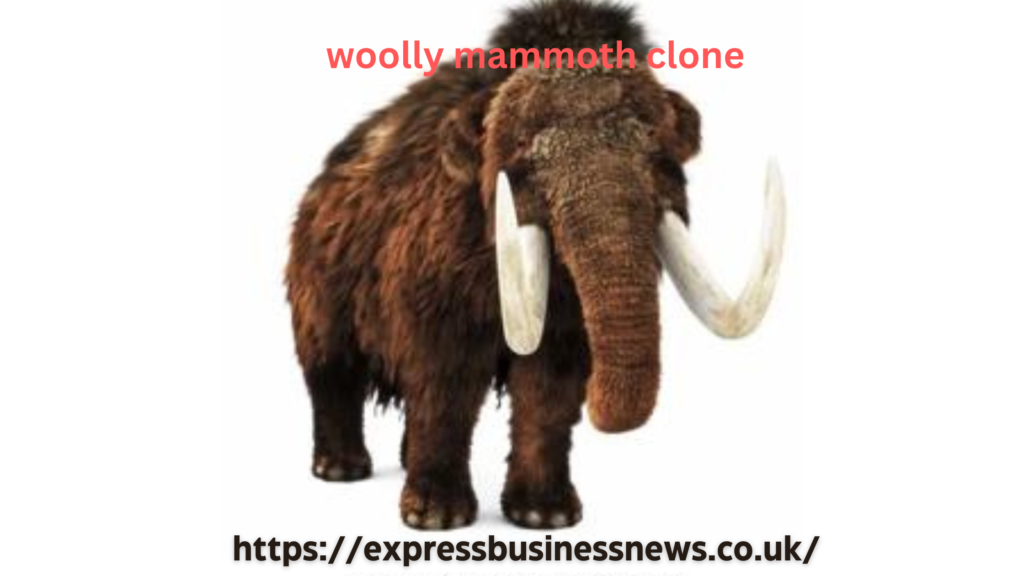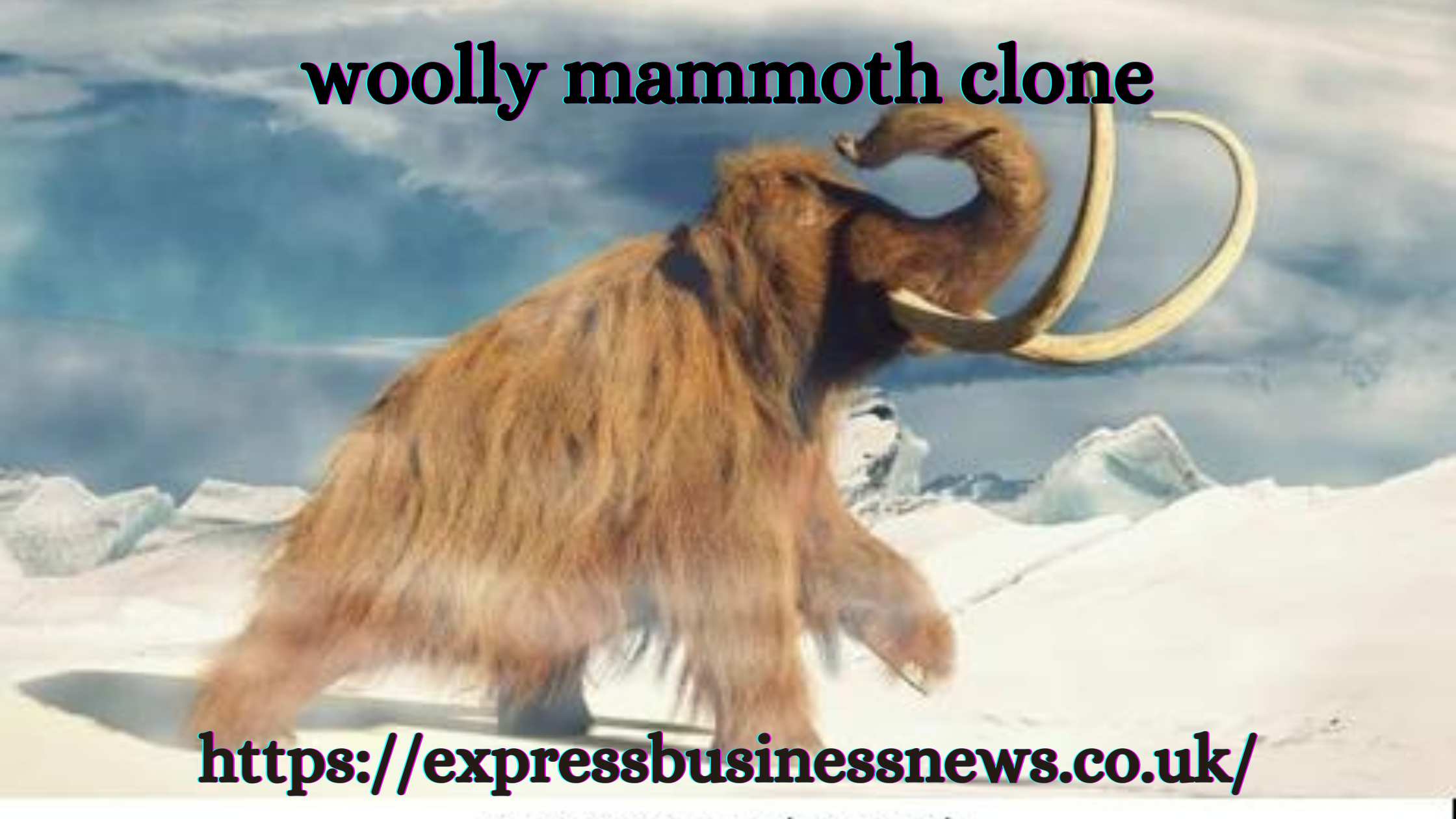introduction
The concept of woolly mammoth clone monstrous has captivated the creativeness of scientists and the public alike. With advancements in genetic engineering and cloning, the opportunity of bringing returned the extinct species has become a subject of debate and debate. In this newsletter, we will explore the technology and ethics of wooly substantial cloning.
The Science of Woolly Mammoth Clone
Woolly Mammoth Clone went extinct around four000 years ago. However, their DNA has been preserved in frozen remains determined inside the Siberian permafrost. Scientists were capable of extracting and collection the DNA of these historical creatures, paving the way for the opportunity of cloning a wooly great.
The procedure of cloning a Woolly Mammoth Clone colossal entails numerous steps. First, scientists extract DNA from a properly-preserved significant specimen. Next, they insert the DNA into an elephant egg cell, which has had its nucleus eliminated. The egg cellular is then inspired to divide and grow into an embryo. The embryo is then implanted right into a surrogate elephant mother, who incorporates the embryo into a time period.
While this procedure has been a hit in cloning other animals, including sheep and farm animals, it has no longer been done with a large woolly. The demanding situation of cloning a wooly vast consists of the issue of extracting outstanding DNA from historical remains and the need to find a suitable surrogate elephant mom.
The Ethics of Woolly Mammoth Clone
The concept of Woolly Mammoth Clone significantly increases several ethical questions. Some argue that cloning an extinct species is unnatural and interferes with the herbal order of evolution. Others argue that it may have unintended effects, consisting of disrupting present ecosystems or developing new illnesses.

There also are worries about the welfare of the cloned monstrous. Cloning is a complicated and unpredictable method, and the cloned mass may also be afflicted by fitness problems or abnormalities. Additionally, there’s the query about what will appear to the cloned gigantic as soon as its miles born. Would it be saved in a zoo or flora and fauna park, or wouldn’t it be launched into the wild?
Another ethical consideration is the cost of cloning a wooly monstrous. The method is probably to be high-priced and time-consuming, causing questions about the allocation of resources. Should confined assets be used to clone a wooly gigantic, or must they be used to addressing greater pressing environmental or social issues?
The Potential Benefits of Woolly Mammoth Clone
Despite the moral worries, there are capacity benefits to cloning a wooly colossal. Cloning should help keep the genetic diversity of the species and provide insights into the evolution of mammoths and their ecosystems.
Additionally, the return of the Woolly Mammoth Clone tremendous may want to have ecological benefits. Mammoths performed a vital role in shaping the Arctic panorama, and their go back may want to help repair the surroundings and mitigate the results of climate exchange.
The Future of Woolly Mammoth Clone
WhileWoolly Mammoth Clone significant remains a work in progress, advancements in genetic engineering and cloning technology are bringing the concept in the direction of truth. However, the ethical issues and capability outcomes must be carefully weighed before proceeding with this sort of complex and unpredictable system.
In the meantime, scientists are exploring other approaches to carry back the wooly titanic, consisting of the usage of gene editing to create a “great-elephant hybrid” through introducing substantial genes into the DNA of modern elephants. This approach should potentially keep away from a number of the ethical issues related to cloning.

Conclusion
The concept of cloning a wooly significant is a captivating and complicated topic that increases important medical and moral questions. While the system continues to be inside the experimental stage, advancements in genetic engineering and cloning in the era are bringing the idea towards truth.
However, the moral concerns and ability results have to be carefully weighed earlier than intended with the sort of complicated and unpredictable procedure. The go back of the Woolly Mammoth Clone sizable should have ecological blessings. However, it is also to additionally have unintentional outcomes and lift questions about the welfare of the cloned gigantic.
Ultimately, the selection to clone a wooly enormous is a matter of discussion and dialogue, regarding scientists, policymakers, and the public. By exploring the technology and ethics of wooly gigantic cloning, we will gain greater information about the capabilities, advantages and dangers of this complex and charming process.
A Woolly Mammoth Clone is a hypothetical organism that would be created via enhancing the genome of the Asian elephant to make it more similar to the genome of the extinct wooly mammoth. This method is known as de-extinction, and it entails manipulating the genome of the Asian elephant, which is the wooly colossal’s closest living evolutionary relative, to make it resemble the genome of the extinct wooly colossal.
The purpose of de-extinction is to create a brand new elephant-atremendous hybrid species, or a mammophant, that looks and abilities just like the extinct wooly skeleton. This might now not be an organic wooly vast, but as a substitute for a gigantic-like creature with a number of the characteristics of an extinct species.
Researchers were operating at the Woolly Mammoth Revival Project in 2015, and they have made huge progress in developing genome editing and engineering techniques to make big-like species. However, they have not but succeeded in creating enormous-like organism.
The system of de-extinction entails the use of genome engineering techniques, including CRISPR-cas9, to reduce precise sequences of DNA inside the Asian elephant genome and replace them with DNA sequences from the wooly immense. This would allow researchers to add genes that help the improvement of thicker layers of fat and longer hair, which are traits of the wooly vast.

The final goal of the Woolly Mammoth Clone Revival Project is to create a large-like creature that can survive inside the Arctic, wherein wooly mammoths live, to sell biodiversity in that area. Researchers believe that the advent of their hybrid species can help save the melting of permafrost, the thick layer of soil and bedrock that stays frozen 12 months-spherical inside the Arctic, thereby preventing the release of greenhouse gases.
While the Woolly Mammoth Clone Revival Project remains inside the studies segment, it has the capability to increase conservation efforts and make contributions to the sustainability of species. The introduction of specialized elephant stem cells, as an instance, can help the elephant conservation network and open up new opportunities for protecting species’ genetic diversity, stopping extinction, and contributing to the sustainability of species.
However, the concept of de-extinction increases moral concerns, and some scientists object to the entire idea of looking to revive extinct animals. They argue that it takes money away from conservation efforts and that it is irresponsible to launch a herd of bloodless-adapted elephants into the Arctic tundra, wherein they may face worldwide warming and a second extinction.
Despite those issues, researchers continue to work at the Woolly Mammoth Revival Project, with the intention of making a titanic-like creature that can help maintain the health of the Arctic atmosphere and contribute to the sustainability of species.
The Woolly Mammoth Clone Revival Project is a systematic enterprise to carry lower back the extinct woolly significant species by means of using genetic engineering strategies. The assignment is being led through various organizations, which includes Colossal Biosciences, a biotechnology enterprise founded in 2021 with the primary purpose of genetically resurrecting the woolly substantial by using combining its genes with Asian elephant DNA
The venture includes using advanced genetic engineering techniques, which include CRISPR-cas9, to edit the genes of the Asian elephant genome to make it extra similar to the woolly massive genome. The aim is not to create an excellent replica of the extinct Woolly Mammoth Clone however to awareness on the significant variations needed for Asian elephants to thrive within the bloodless weather of the Arctic
The closing intention of the Woolly Mammoth Clone Revival Project is to convey lower back this extinct species so that wholesome herds can also at some point re-populate the tundra and boreal forest. The project is primarily based at the concept that the tundra and lots of the taiga were as soon as a grassland deer, caribou, horses, bison, and woolly mammoths. At the stop of the Pleistocene, those herds vanished, main to an ecosystem conversion away from plentiful grasses in the direction of a greater shrub-dominated network. The introduction of grazers to tundra generates a nutrient cycle that lets in grasses to out-compete the tundra plant life, changing the surroundings in a way that then favors the persistence of grazers and grasses
The Woolly Mammoth Revival Project is likewise exploring the capacity blessings of the task for the conservation of the Asian elephant, that is a significantly endangered species. The bioengineering, genome research, cell assets, and reproductive strategies as a way to be advanced to pursue woolly mammoth de-extinction will enhance our expertise and the conservation of the Asian elephant. The bioengineering procedures may also pave new ways to use genetic rescue to fight herpes for Asian Elephants or to combat the ivory exchange, which would permit male elephants to hold their massive tusks – essential signs of correct genes for mating
However, the Woolly Mammoth Revival Project also increases ethical issues. Some scientists item to the entire concept of trying to revive extinct animals, arguing that it takes cash far from conservation efforts and that it is irresponsible to release a herd of cold-tailored elephants into the Arctic tundra, where they may face global warming and a 2nd extinction. Despite those worries, researchers retain to work at the Woolly Mammoth Clone Revival Project, with the intention of creating a giant-like creature which can assist hold the fitness of the Arctic atmosphere and make a contribution to the sustainability of species





